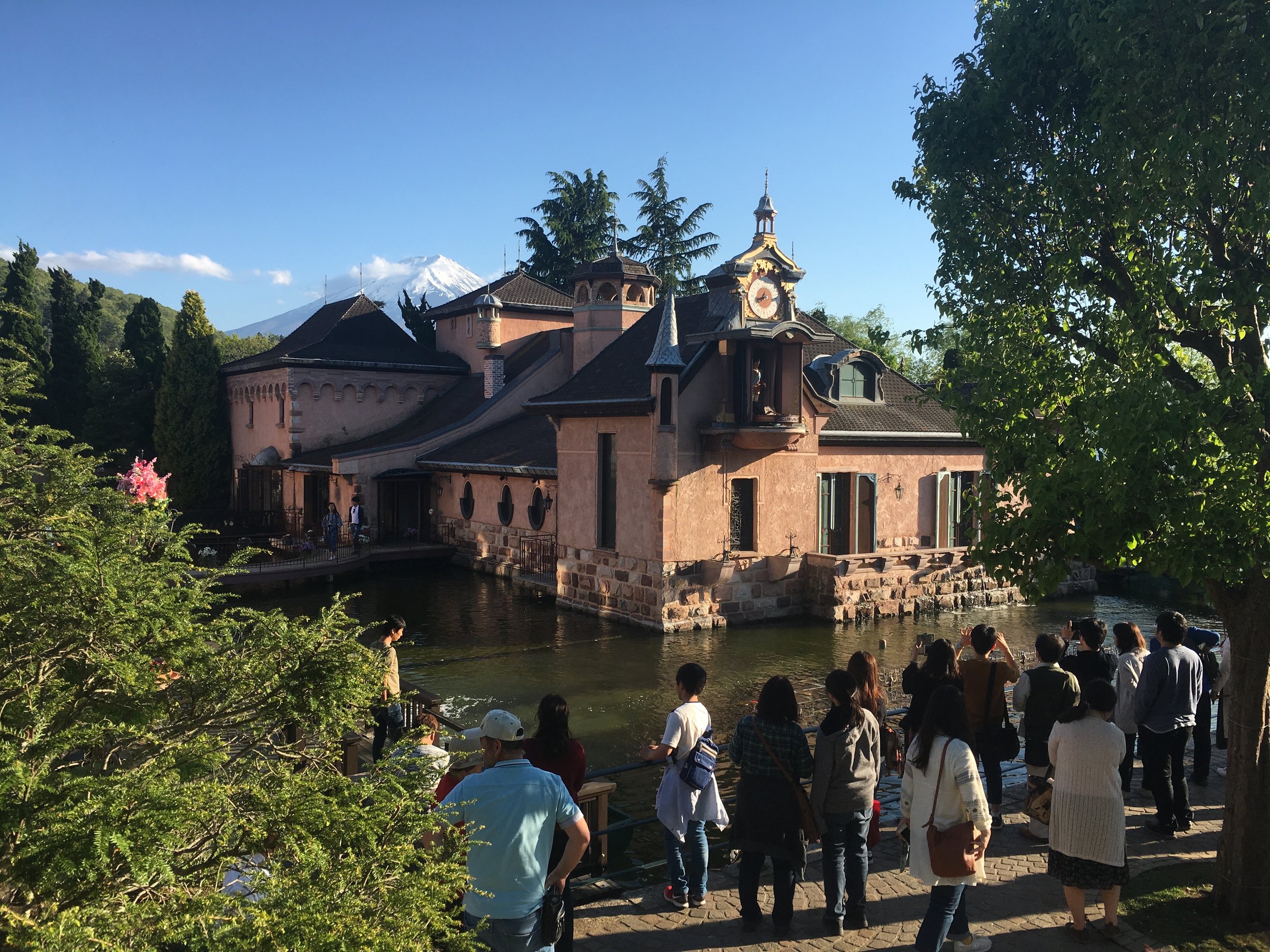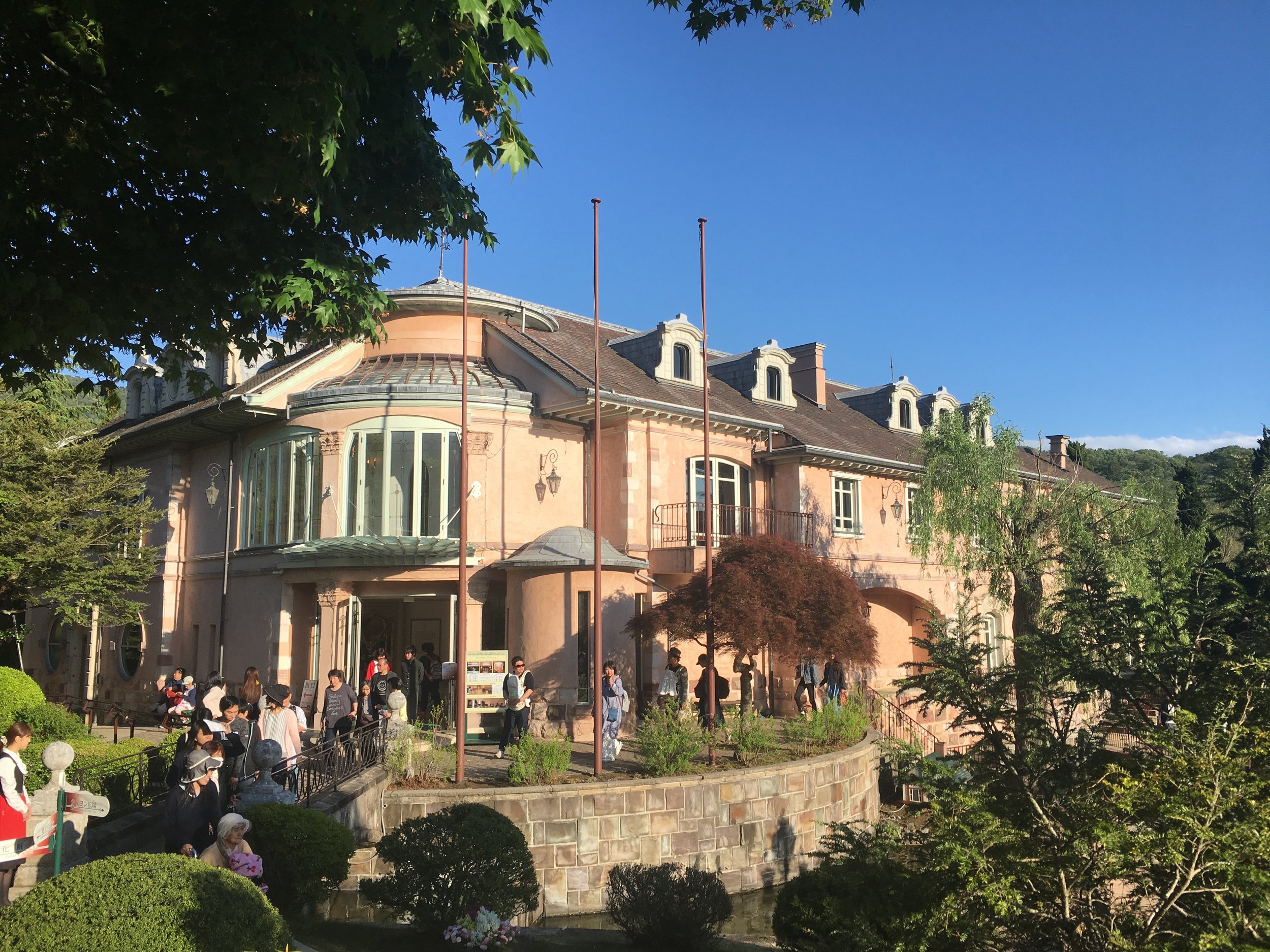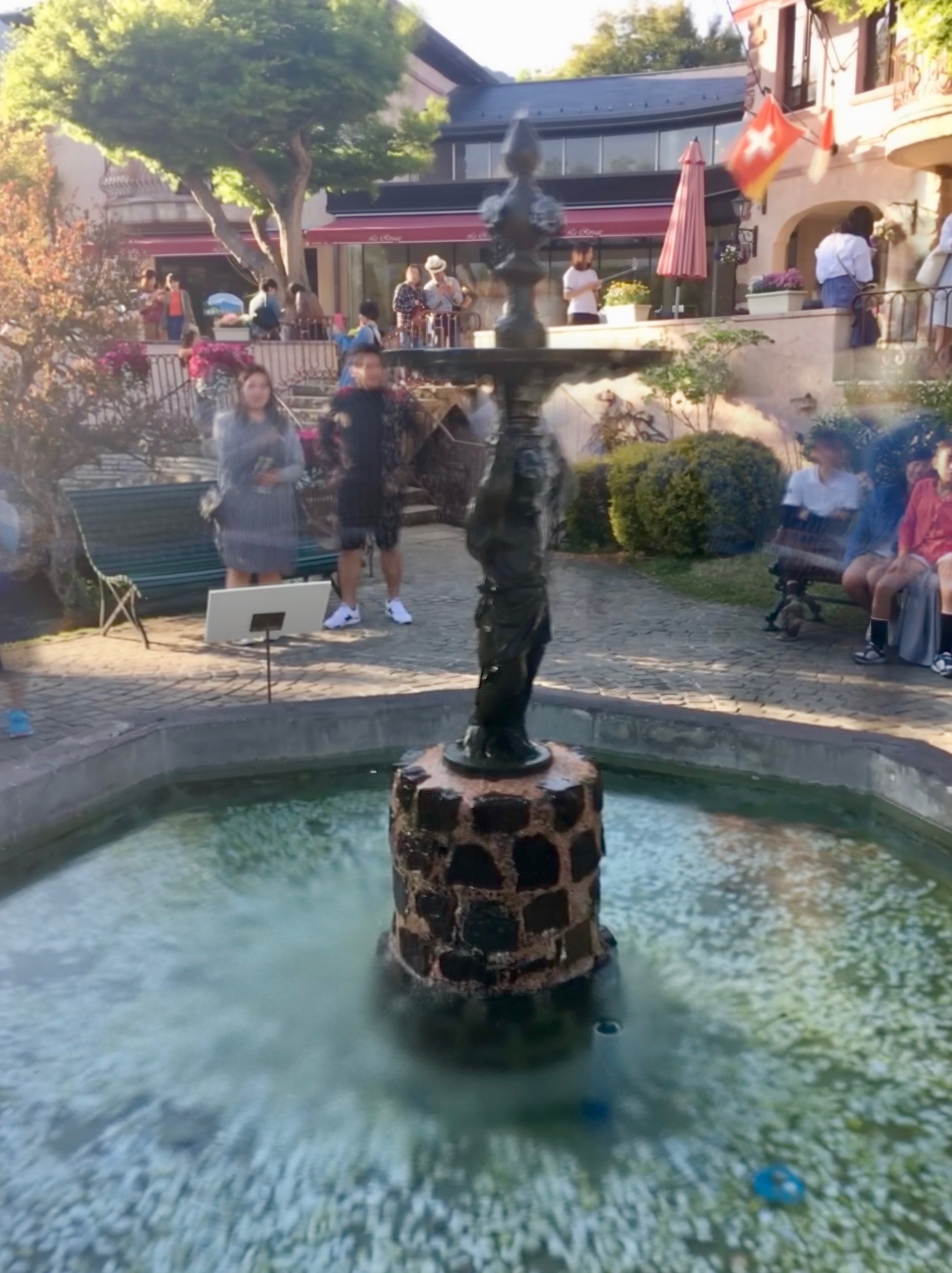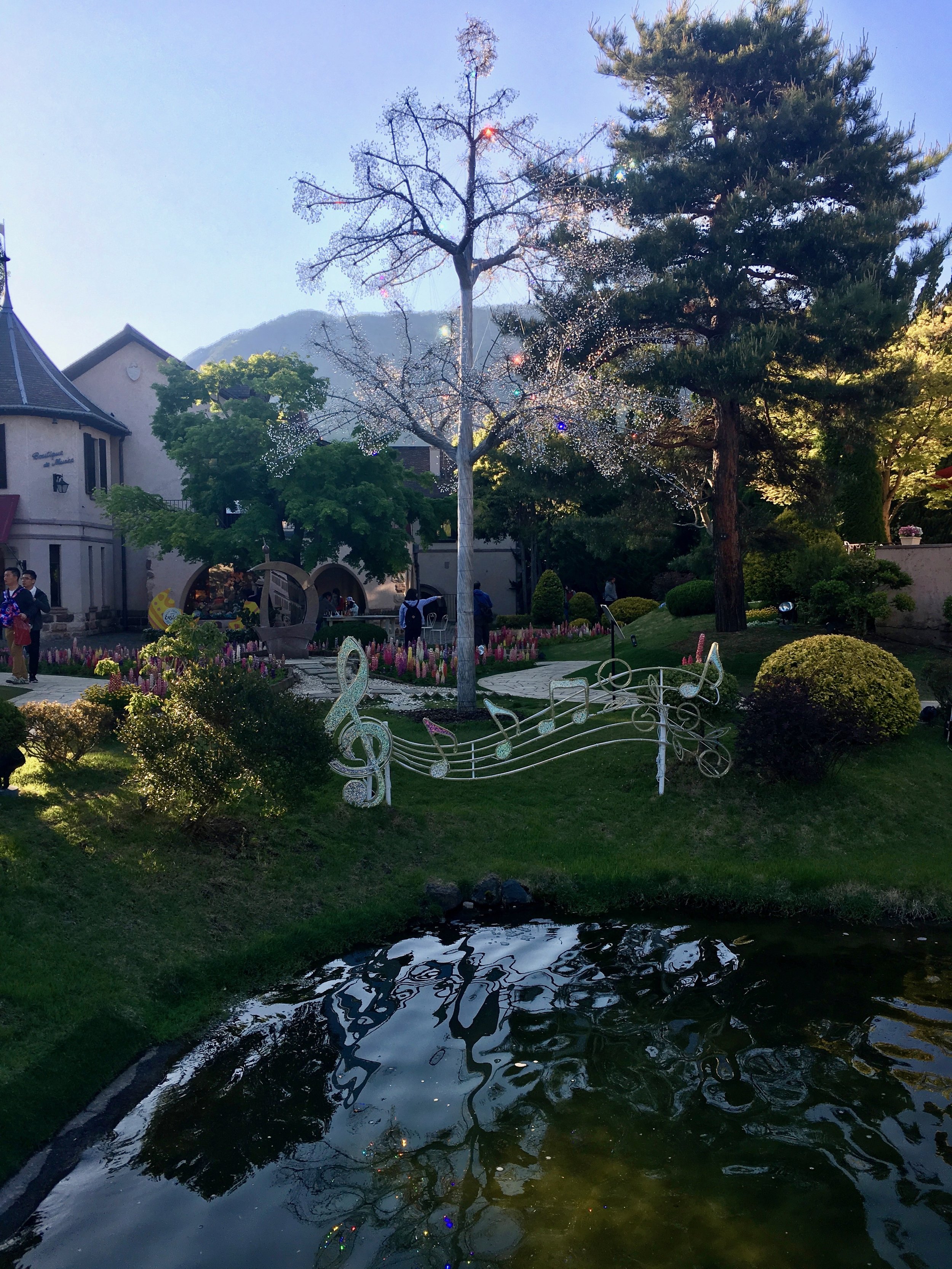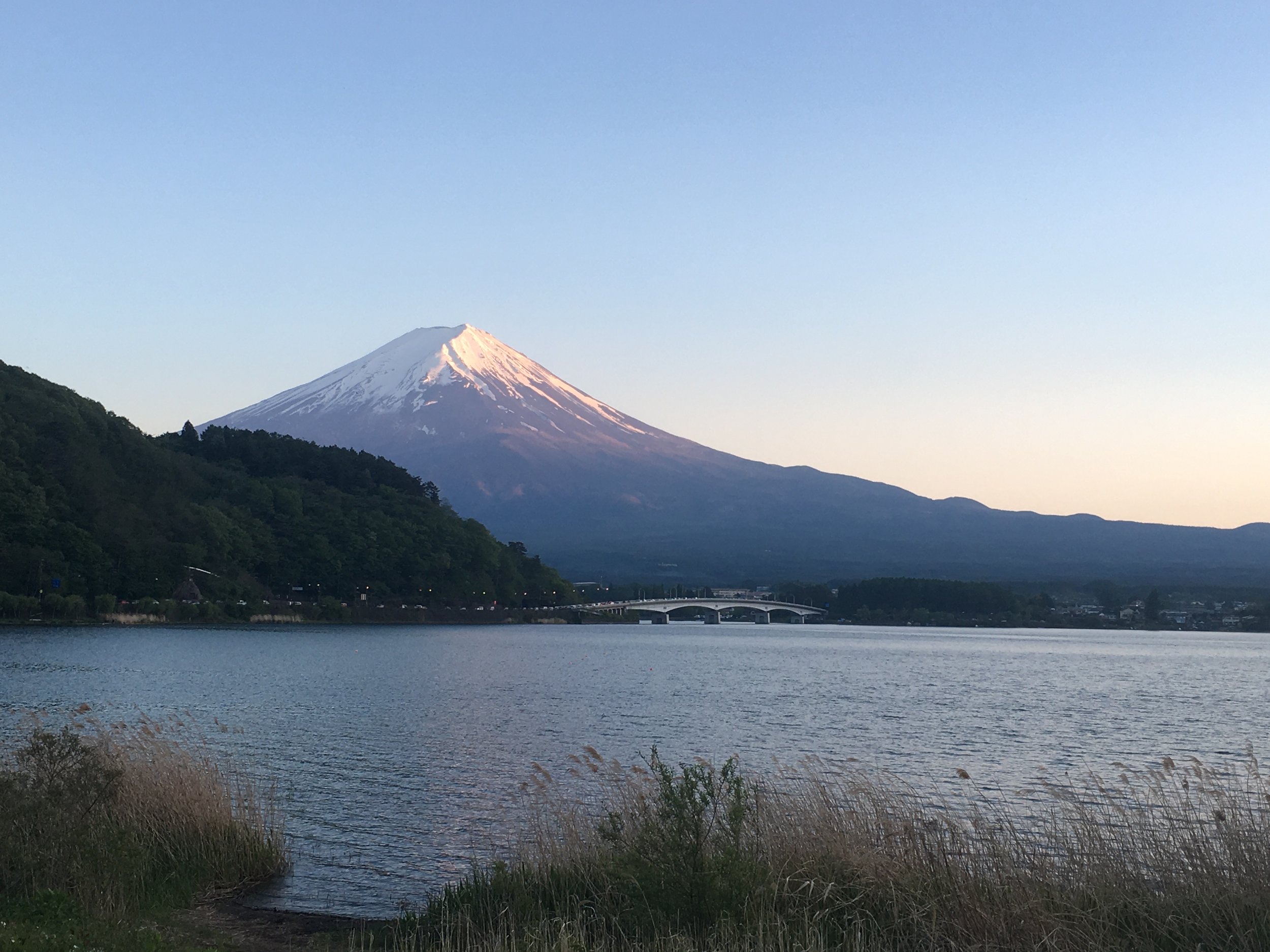I took a bite of chocolate cake as I gazed out at the enchanted Medieval village. Overlooking the beige stone turrets, the evening sun was sinking into the snow-capped summit of Mount Fuji. I chewed thoughtfully. There were many aspects of my current situation that were surprising.
Firstly, I had set out from my apartment that morning for a day trip to a flower festival. Not only had I not caught so much of a sniff of the promised pink phlox, but the approach of dusk spelt out that this jaunt would be running overnight. Then there was the fact I was currently surrounded by buildings and music that were clearly from a European fairy tale: the type that commonly included a handful of knights, a dragon and fairy godmother to fire up the pumpkin-shaped carriage I'd passed on my way through the gates. It was a theme that stood in stark contrast to the iconic Japanese mountain backdrop. Last but not least, this was an enchanted Medieval village. That is always mildly surprising.
It was the time of year known as "Golden Week" in Japan, where a run of public holidays produce a shortened working week whose exact length depends on how the holidays fall. This year, Tuesday and Wednesday had been normal working days, but Monday, Thursday and Friday were government-sanctioned vacation. While I had anticipated the resulting crowds at visitor spots, I had utterly failed to appreciate traffic conditions. Roads have ONE JOB. And on the Golden Week long weekend, they do NOT DO IT.
This oversight had resulted in a six hour journey to make the usually 2.5 hour trip down to Lake Kawaguchi, near the base of Mount Fuji. From there, I should have been able to take a 30 minute shuttle bus over to the Fuji Shiba-Sakura flower festival, except traffic was so bad the trip was taking at least two hours. The shuttle therefore closed several hours earlier than advertised, leaving me abandoned and feeling decidedly cheated on the steps Kawaguchiko station.
Mooching over to the tourist information booth, I was marginally mollified by a map being stuffed into my hands. "There's a lovely walk around the lake," I was told. "Takes about an hour."
I did not return for five hours.
With Japan's most recognisable landmark soaring up close to its banks, Lake Kawaguchi is a beautiful spot. Swan boats dotted the lake and a shop sold me a two-flavour peach and lavender ice cream. I'd also ridden a Thomas the Tank Engine -themed train for the last part of my journey, which was just plain pleasing. I pulled out my phone and found a local capsule hotel that had a handful of beds left for the night. I booked one, swore to try the flower festival early the next day and deviated from the hour lake walk.
(As a side note, the Thomas the Tank Engine train was to advertise "Thomas Land", on the same line. Past the end of this tale, I was to catch sight of the theme park which was dominated by a terrifying looking multi-loop rollercoaster. It is possible Japan based their knowledge, not on the beloved TV series narrated by a former Beatle, but on this version.)
Rather than turning back towards the town, I ignored the map and continued along the lake front towards another cluster of buildings. It was as I approached the largest complex that I heard the music.
It was the sound of stringed instruments, overlaid with a variety of chimes to give an early music quality to the harmonies. The music drifted from a cluster of buildings just out of sight from the lake, concealed behind tall trees.
I wove around the perimeter until I came to the main gate labelled "Kawaguchiko Music Forest." At the rather late time of 4pm, it was a mere 500 yen (about £3.40) to enter.
So what if all evil fairytales began with luring victims into beautiful, tree-lined estates by enticing music from which they can never escape? It was a bargain.
And the place was beautiful. The main building was topped with turrets and surrounded by a moat of water. Upon the hour, the clock chimed and an animatronic solider appeared like a giant cuckoo to conduct a water display before disappearing again from view. There was a wishing fountain (complete with instructions for the uninitiated), a rose garden, a shop full of delightful carved and mechanical toys and a white artificial sculpture that looked suspiciously like a Christmas tree.
Music played throughout the little village while the chimes were added by the visitors themselves, playing with different musical sculptures. There were a set of cow bells, another line of multicoloured handbells and a frame of hanging chime bars.
I ordered a slice of chocolate cake and resigned myself to the fact this was clearly a magical trap. Possibly I would exit the village to find hundreds of years had past in the real world. I could only hope that was long enough for the Golden Week traffic to clear.
Next to the water conducting solider was a building that resembled a European manor house that turned out to be a museum. A sweeping wooden staircase swept you past a collection of rather creepy dolls to the first floor where there was an incredible set of music boxes.
"Music box" is perhaps the wrong word. The mechanisms were like that of a music box, with the notes recorded as ridges on rotating metal discs or cylinders. But these were not jewellery-sized secret holders, but cabinets of polished wood and metal, all dating from several centuries past. What was more, they all still worked.
The assistant went from music box to music box, starting one up after another finished its tune. One example dated from the late 1890s in Germany and required a coin to start playing (the second video of the music boxes, above and left). The museum either had a coin from the right country and era, or had fashioned one good enough to fool the mechanism. The result from each music cabinet was a sound rich enough to fill a room.
They were truly beautiful pieces, although one did make me feel rather more uncomfortable. Above the music mechanism of this 1910 example from France, five doll musicians were poised to play. Each was portrayed as a black man with a monkey at the piano. I'm unsure of the history behind the design (and google failed me in my inquiries), but my suspicion is that it would involve an unpleasant disregard for human rights.
Behind the music boxes, in a different part of the room was a huge ornate dolls house resembling a French palace.
In the grounds and the open ballroom, tiny dolls in the full noble regalia of frilly clothing and powdered wigs whirled on their mechanical stands.
As I eyed the dolls' fixed smiling faces, I began to get a gnawing suspicion about what happened to visitors who eat the chocolate cake in the enchanted village.

